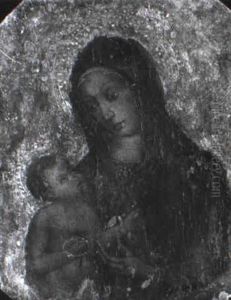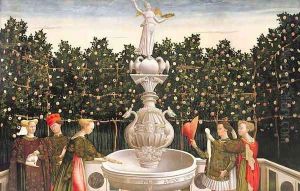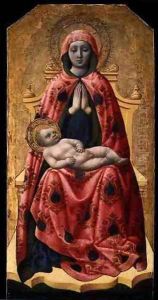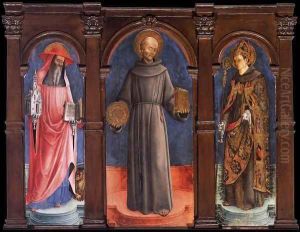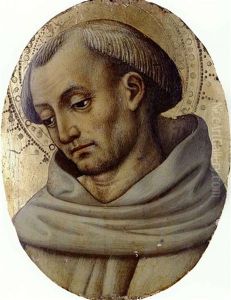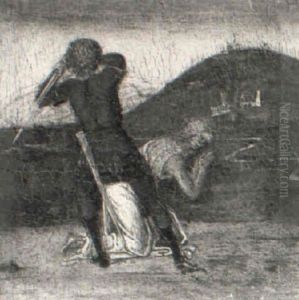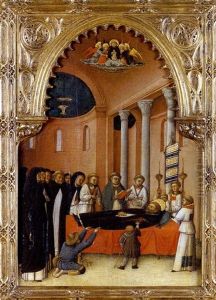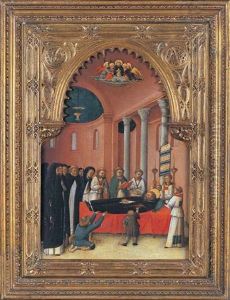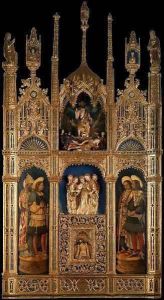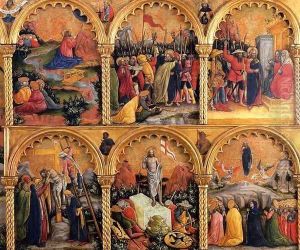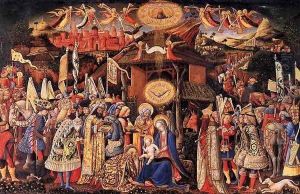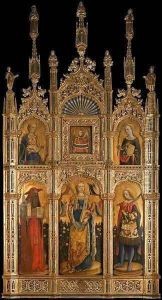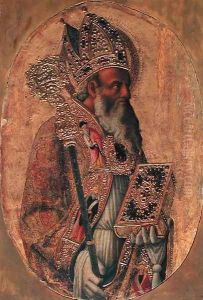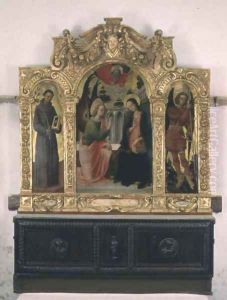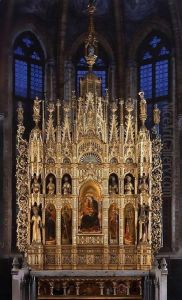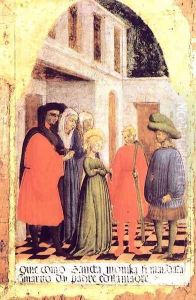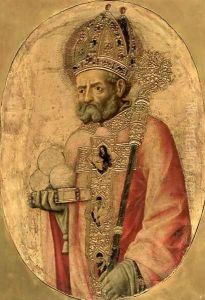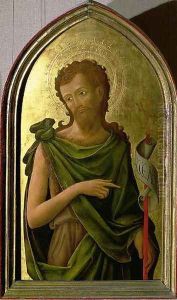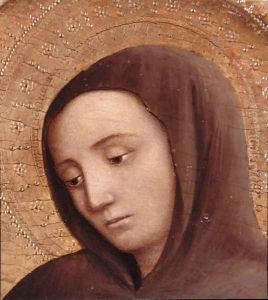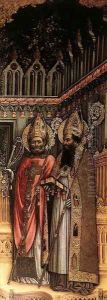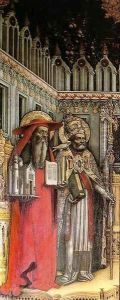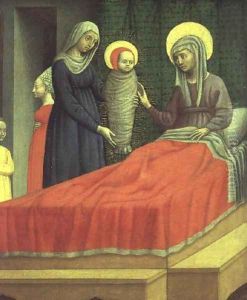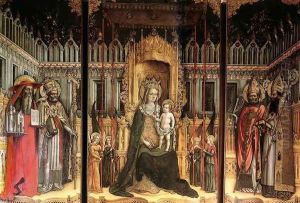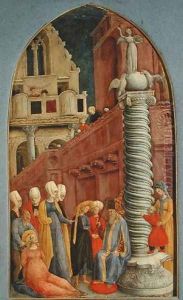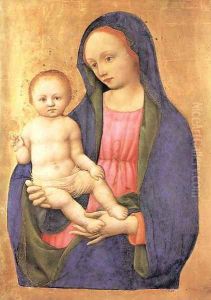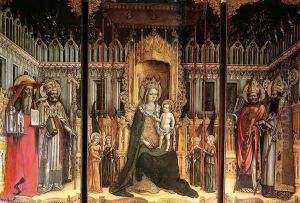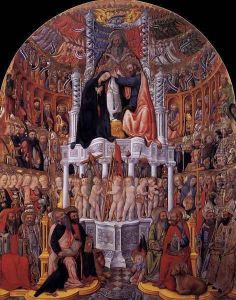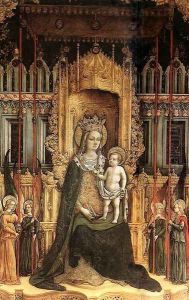Antonio Vivarini Paintings
Antonio Vivarini, also known as Antonio da Murano, was an Italian painter of the early Renaissance period, active mainly in Venice and the Venetian mainland. He was a prominent member of the Vivarini family of painters, which included his brother Bartolomeo and his nephew Alvise. Antonio is believed to have been born in Murano, a series of islands in the Venetian Lagoon famous for its glassmaking, around the year 1415.
Antonio's early life is not well documented, but it is known that he was active from the 1440s onwards, working alongside his brother Bartolomeo in their shared workshop. His work is characterized by the influence of both the Gothic and early Renaissance styles. The Vivarini brothers were among the first to introduce the Renaissance style of painting to Venice, combining it with the traditional Byzantine elements prevalent in Venetian art at the time.
Antonio was adept at both fresco and panel painting, and he produced many altarpieces for churches in Venice and its territories. His works are noted for their vivid colors, attention to detail, and the serene expressions of the figures he painted. One of his significant contributions to Venetian art was the introduction of more naturalistic and humanized portrayals of religious subjects.
One of Antonio's most famous works is the polyptych in the Church of St. Zaccaria in Venice, which he completed with his brother. His collaboration with other artists extended beyond his family, as seen in his work with Giovanni d'Alemagna, with whom he produced the altarpiece for the Cathedral of Osimo.
The last records of Antonio's activity date to the 1470s, and he is presumed to have died around the year 1480. While not as well-known today as some of his contemporaries, Antonio Vivarini's work played a significant role in the development of Venetian painting, and his legacy continues to be appreciated by art historians and enthusiasts.
